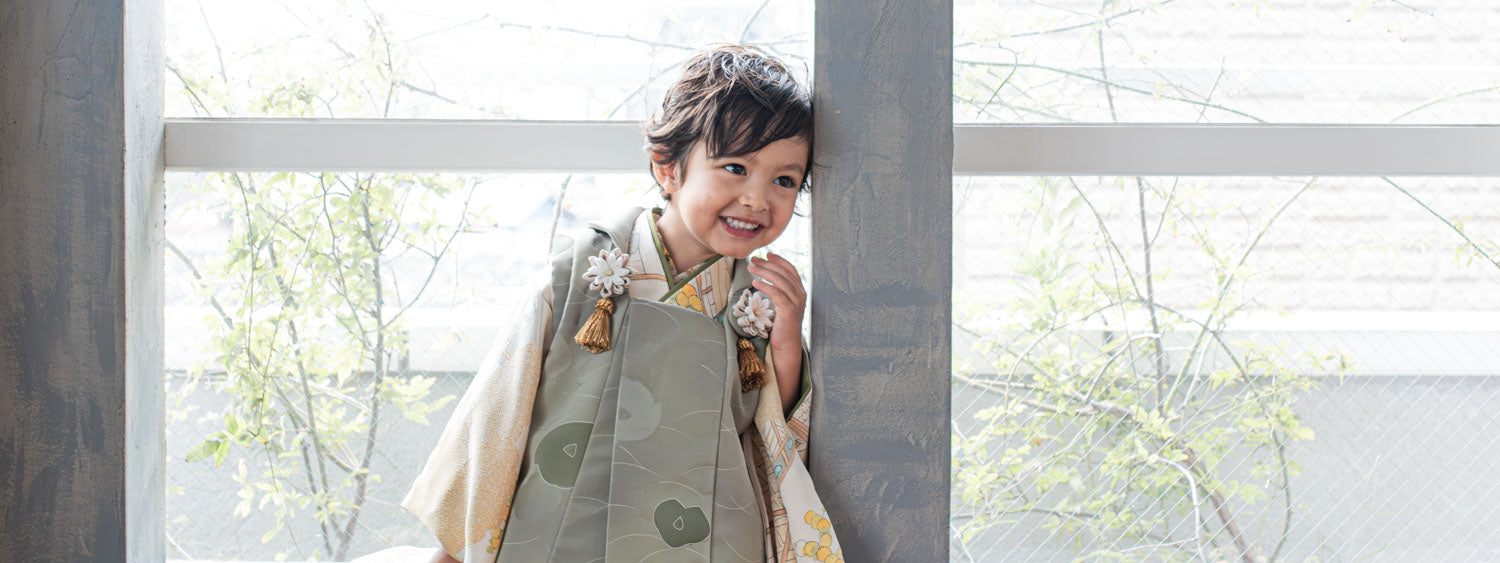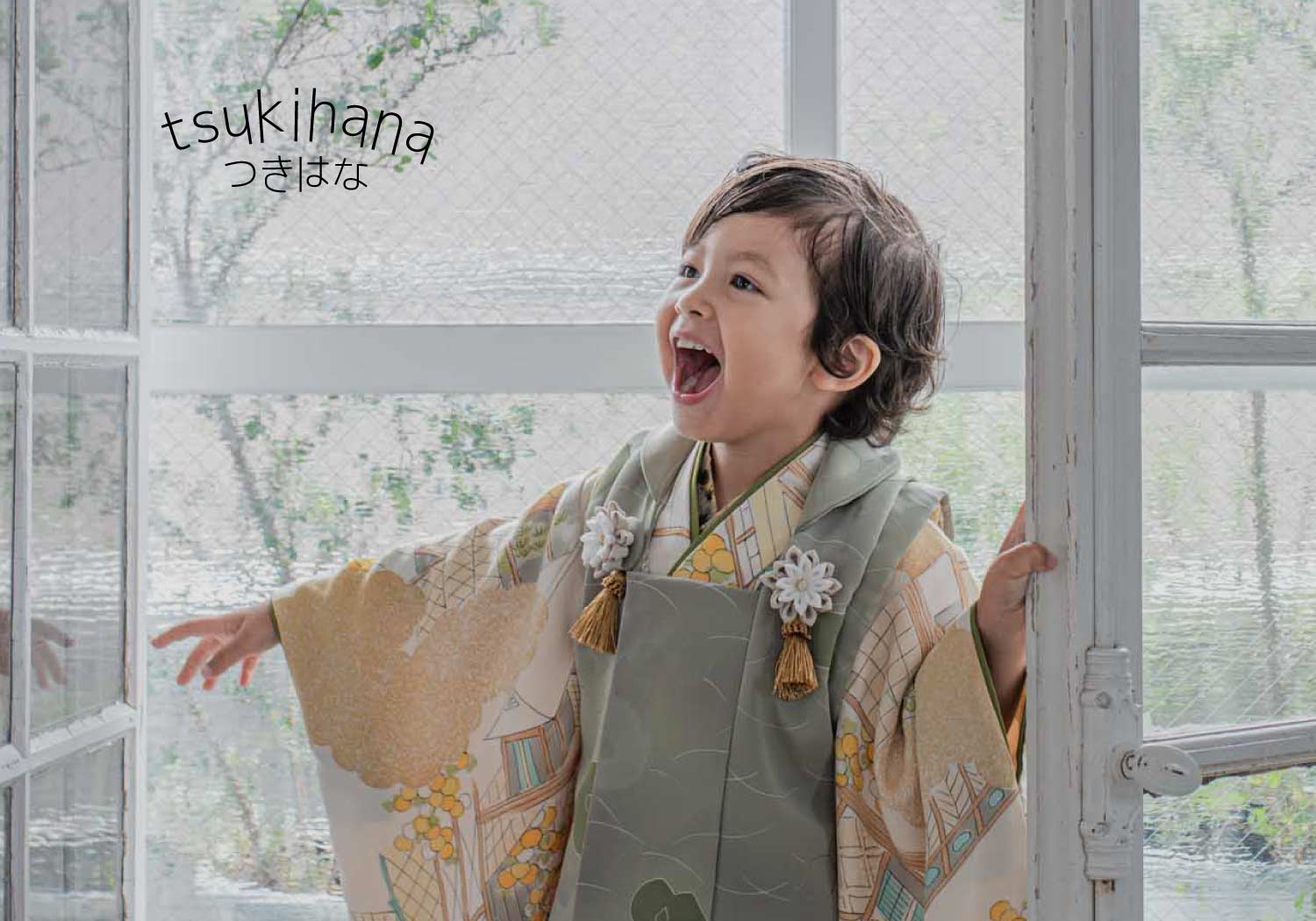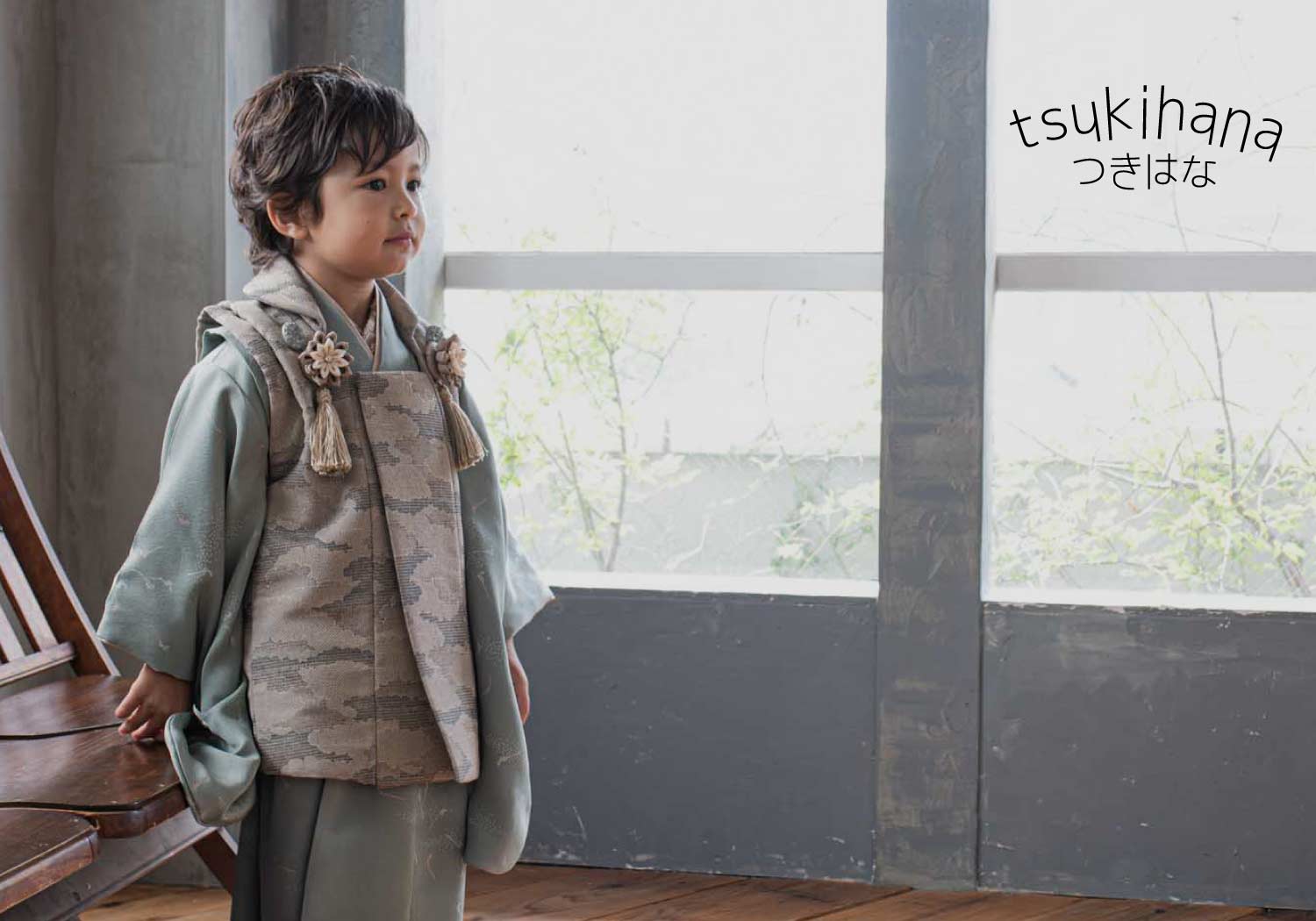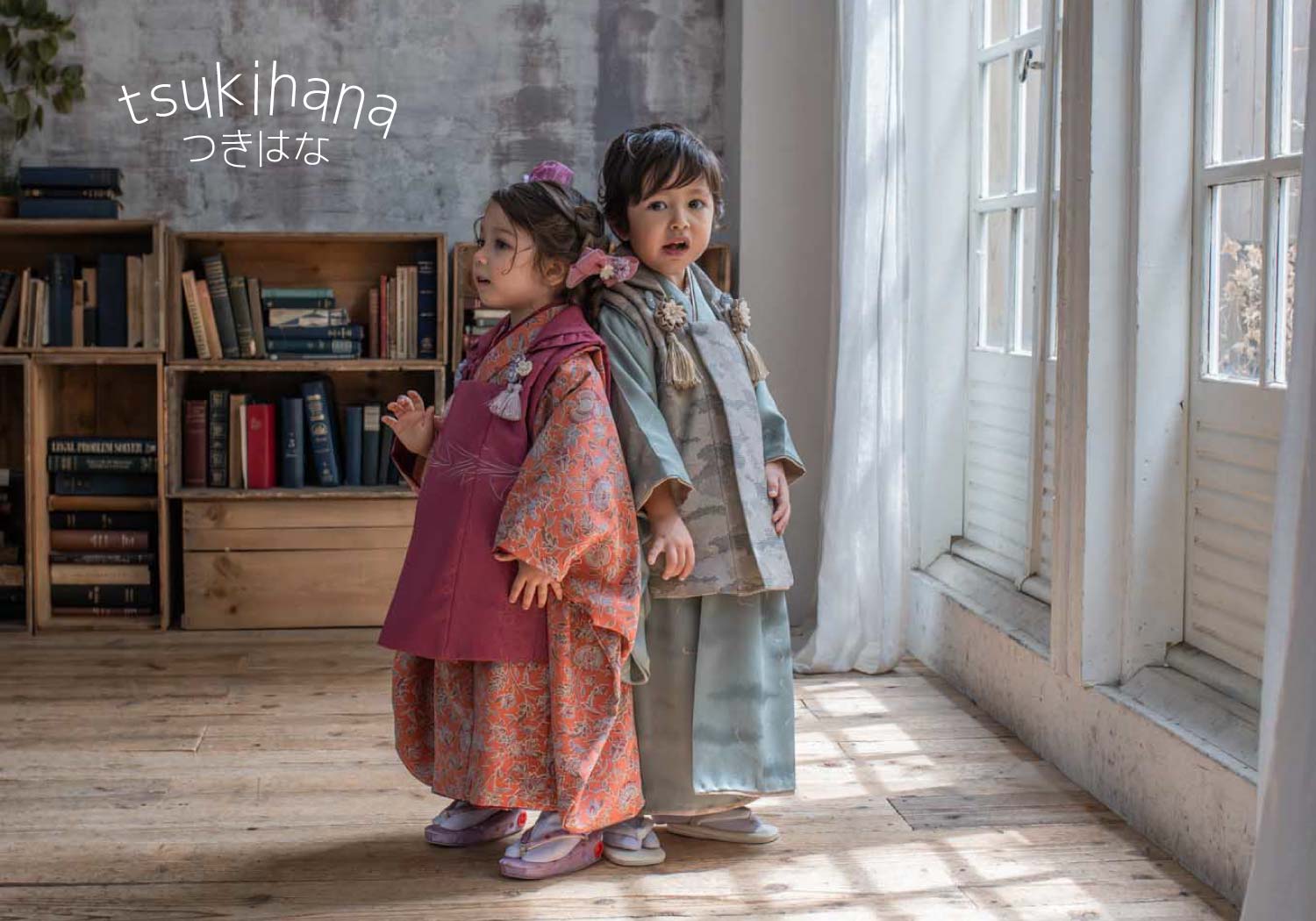What about Shichigosan for 3-year-old boys?
There are so many benefits! I hope you'll celebrate it if possible.
Traditionally, both boys and girls are celebrated.
Depending on the region, there may be some areas or families that do not celebrate the Shichi-Go-San event for three-year-old boys.
However, the original origin of Shichigosan is that it is a celebration for both boys and girls . The reason for this is that at the time, the child mortality rate was very high due to medical and hygiene issues, and parents' greatest wish was for their children to grow up healthy.
To celebrate the baby's safe growth to three years old, a ceremony called the "Kamioki no Gi" (hair-laying ceremony) was held, and prayers were offered for the baby's future health and growth.
Age 3 | Hair-Cutting Ceremony (for boys and girls)
Kamioki no gi
During the Heian period, there was a custom of shaving a baby's head on the seventh day after birth and keeping it shaved until the age of three.
This was because the purpose was to keep the head clean when young, and children only started growing their hair from the age of three.
It is said that a celebratory ceremony was held as proof that the baby had grown safely to the age of three, and prayers were offered for the baby's long life.
This ceremony is performed for both boys and girls age three.
For celebratory attire, both men and women mainly wear hakama kimonos .
What are the benefits of a 3-year-old boy celebrating Shichigosan?
Let's make a memorable memory of the cutest 3-year-old boy♪
The Shichigosan ceremony for three-year-olds is held based on their "age by traditional Japanese counting" or "actual age," but boys at this age are cute and still have a bit of innocence, and it can be said with confidence that this is the most adorable time in their long lives! The celebratory outfit that can be worn at this time is the "Hifu Kimono."
The only time boys have the opportunity to wear this hifu kimono is around the time of the Shichigosan ceremony at the age of 3. After the age of 3, they start to grow more and more like boys, and as they become more boyish, the hifu kimono no longer suits them.
The Shichigosan festival is a once-in-a-lifetime event for three-year-olds. Some children may have expressions, smiles, and gestures that they can only see at this time of year, and some may be going through the "no-no" phase, but this is a chance to capture the memories of your child during this cute period in photos and videos.
We also recommend taking a commemorative photo of your family holding the Chitose-ame candy that you receive at the shrine. Let's all pray together for the growth and health of our precious children.
What to wear for a 3 year old boy?
Kimono with haori and hakama | Suit (Western style)
When it comes to celebratory attire for boys, many people may think of a montsuki hakama (haori hakama) or a suit (Western clothing), but for the Shichigosan ceremony at age 3, we recommend a hifu kimono .
Originally, the celebrations for three-year-olds had a different meaning from those for five- and seven-year-olds. It was not about "joining the adult world," but rather about celebrating "having safely reached the age of three." Therefore, there is no need for children to wear the same haori hakama (for boys) or obi kimono (for girls) as adults.
Haori hakama and kimono can be worn during the Shichigosan ceremony at the age of 5 or 7, and suits may also be worn for graduation and entrance ceremonies, so we recommend a haori kimono for children aged 3.
Another reason why we recommend wearing a hifu kimono is that it is easier to put on than a haori and hakama . Kimono for three-year-olds often have a waist string sewn in and the waist adjustment is already done (sewn in), so even small children can put on the hifu in a short amount of time without any stress, since all they have to do is tie a single waist string.
In addition, this hifu kimono is also worn for the Shichigosan ceremony for three-year-old girls, but there are also many hifu kimonos made for boys, so you are sure to find one that you like.
What does a 3-year-old boy do for Shichigosan?
[Prayer at the shrine]
The Shichi-Go-San visit involves visiting the local guardian deity of the place where the child lives and praying for the child's future growth and health.
If you don't know which shrine your tutelary shrine is, you can find out by inquiring at the shrine office in your prefecture .
Alternatively, it is fine to have a prayer at a shrine that you have a connection with or that you prefer.
However, it would be wise to avoid going to places that are too far away as it would be a burden on your child.
·Things to prepare
- First fruits offering
It is a good idea to check with the shrine in advance about the amount of money to be given when praying.
*Please put the money in a gift envelope and bring it with you on the day.
- Children's costumes
Prepare a suitable Shichi-Go-San kimono. You can rent, buy, or have it tailored from scratch. It's a lot of work to get everything ready, so we recommend Shichi-Go-San rental costumes, which often come as a complete set.
Make sure to make a reservation in advance so you can wear the item you want.
- Parents' costumes
Either Japanese or Western clothing is fine as long as it's formal.
However, make sure the costume you choose is not more sophisticated than your child's.
When choosing traditional Japanese clothing, mothers should choose formal attire such as Homongi, Tsukesage, or Iromuji.
It is best for the father to choose a kimono that matches the mother. Basically, a plain kimono with a haori coat is fine.
Alternatively, wear a formal plain suit.
If you are dressing in Western clothing, your mother should wear a formal suit or a dress and jacket. Avoid bright, flashy colors.
Fathers wear formal plain suits.
- Other useful items: Children's comfortable shoes (wearing sandals for long periods of time is tough)
・Foldable eco bag (for all the things we keep bringing with us)
・Folding fan (it's still hot in September and October)
・Water bottle with straw (so it's less likely to spill on your kimono)
・One waist cord (to roll up your kimono when using the toilet or washing hands)
・Small snacks (when they're fussy, Ramune is good)
- Preparation before departure: Learning how to put on a kimono (I was forced to make some adjustments)
・Hair and makeup before dressing (finish early)
・Go to the toilet right before getting dressed (it's a pain to go to the toilet after getting dressed)
[Commemorative photo]
・Photo studio
Kimono and haori hakama costume rentals, dressing, hair and makeup, and photography are often included in the package, so you can casually take commemorative photos empty-handed.
Each studio has different rental costumes, backgrounds, and accessories, so be sure to get information in advance and make your selections.
Many studios allow you to bring your own Shichi-Go-San costumes . If you have a favorite costume, feel free to ask about it.
・On-location photography (location shooting)
This photo was taken when praying at a shrine.
You can use a visiting photographer or bring your own camera.
Alternatively, there are plans that include on-site photo shoots at a photo studio.
It would be a good idea to take separate photos before and after the prayer.
I took a quick photo before he lost his mood (before the prayer)♪
I recommend taking a shot from behind of a parent and child walking up the approach to the shrine.
After the prayer, take a photo in front of the shrine with some Chitose-ame.
Don't forget to take a video.




